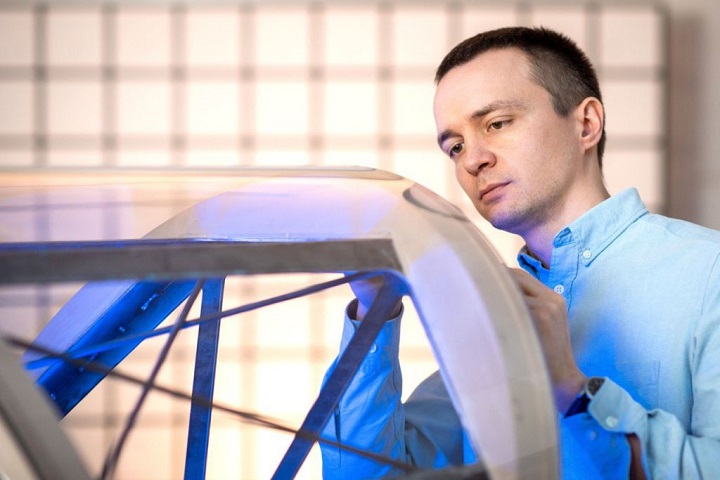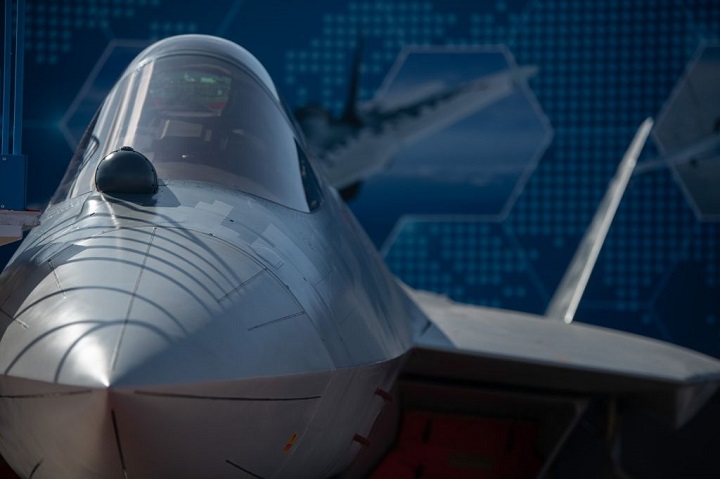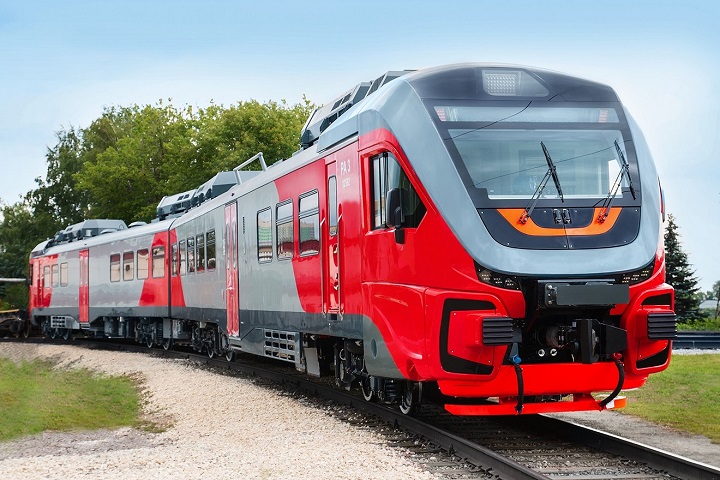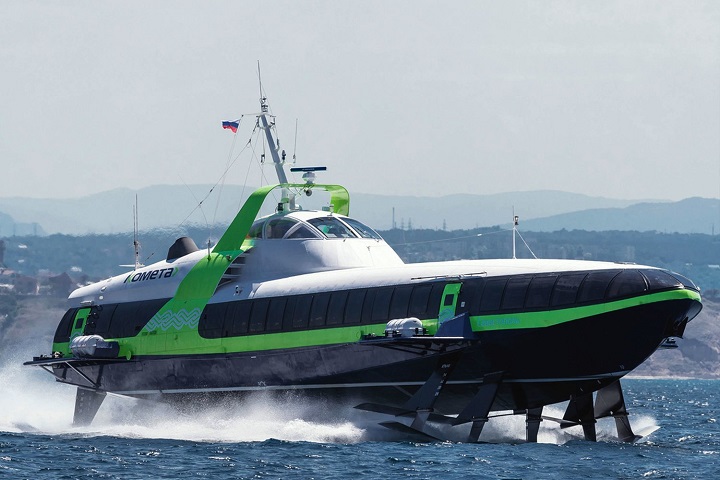Господдержка предприятий-производителей строительных материалов

Glass for the cockpit of an aircraft pilot or a train driver should be different from ordinary window glass - this is clear to everyone. Cabin glazing requirements include protection against mechanical damage and temperature changes, and good visibility.
A holding in the chemical industry of Rostec, which is headed by the Obninsk Research and Production Enterprise "Technology" named after. A.G. Romashina, revives technology and increases the production of such high-strength glass. For example, the Obninsk enterprise produces more than 100 types of structural optics for aviation and occupies almost half of the Russian market in this segment.
We talk about how the holding develops and produces high-strength glass for aviation, space and railways.
Scientific school
The domestic scientific school of high-strength glass was formed in 1968. Its founder was Serafim Maksimovich Brekhovskikh, an outstanding scientist and organizer of production. Thanks to the activities of Serafim Maksimovich and his students, technologies for the synthesis and production of transparent and colored glasses and glass-ceramic materials were developed.
So the Soviet industry received strong, heat-resistant materials with high radiation-optical stability. Such glazing withstood high temperatures, dynamic loads, radioactive radiation and other influences of aggressive environments.

Photo: ONPP "Technology"
Many unique developments of the scientific school received Soviet and Russian state awards. Among them are glass for the cockpit of the Buran spacecraft and bulletproof glazing of Lenin's sarcophagus in the mausoleum.
Today, work continues on the production of various types of especially durable glass for aviation, colored glass for aeronautical lights of new generation aircraft, capable of withstanding the highest temperatures.
Resurrecting Technology
ONPP "Tekhnologiya" is engaged in both research and direct development and mass production of glass products for aviation. The company produced frontal and side glazing for the cockpits of the Tu-154, L-410, Il-86, Il-96, An-124, Tu-160 aircraft, as well as extra high-strength polycarbonate glazing for the fifth generation Su-57 fighter.
The glazing of the cockpit of an aircraft or helicopter can be made of silicate or organic glass, or you can combine the best properties of each of the materials, making a heterogeneous composition. If silicate glass can be used for years with virtually no loss of optical characteristics due to its high abrasion resistance, then organic glazing is lighter, stronger and has many times greater impact strength.

The ability to combine the winning sides and compensate for the shortcomings of each of the materials is not an easy task for scientists who create unique compositions for shipbuilders, aircraft designers and railway transport developers. The functional qualities of optical structures (aircraft glazing, consisting of several layers of different materials and a multifunctional coating applied, it is hard to call it otherwise) have grown significantly since the Obninsk enterprise developed and implemented the technology for working with optical polycarbonate.
Ordinary glass is not enough for glazing aircraft; laminated glass, triplexes and pentaplexes are needed here. Layers of silicate or organic glass are connected by a polymer film in an autoclave at elevated temperature and pressure. Triplex - these are two glasses glued together with a polymer material, pentaplex, respectively, consists of three sheets of glass and two polymer layers.
This "sandwich" technology gives aviation glass the necessary strength, transparency, sound insulation, the ability to withstand large temperature changes - in general, all the qualities for "survival" in the most extreme conditions. One of the main benefits is safety. The polymer film holds the fragments, prevents them from flying apart, and the glass from completely breaking down.

Rostec has revived the production of material for aviation glazing
Photo: ONPP "Technology"
Domestic polymer film for gluing glasses in optical structures for aviation purposes was produced in the Soviet era, but in the 1990s its production ceased, the specialized enterprises were closed. I had to use imported materials. The issue of import substitution in the production sector was acute, because without our own glazing it is impossible to imagine a domestic, completely localized production of aircraft.
The task of creating and mass-producing an already modern Russian polymer film that meets all the requirements for strength and resistance to extreme temperatures was carried out by the Research Institute of Polymers. Academician V.A. Kargin in Dzerzhinsk. The research institute is part of the Rostec chemical industry holding, the head organization of which is ONPP Tekhnologiya.
The quality of this material is not inferior to the best imported samples. Rostec is ready to provide the aviation industry with 100% polymer film for glazing.
On land, in water and in the air
Aviation glazing is not limited to the "Glass" direction of ONPP "Technology". For railway transport, the holding produces more than 300 types of glass products for driver's cabs. As in the field of aircraft glazing, here the company occupies about half of the Russian market. Technologiya develops and mass-produces glazing for already operating trains and subway cars, as well as for advanced railway equipment.

Rostec has replaced the production of heated glazing for locomotives
Photo: ONPP "Technology"
The glass in the driver's cab is a multi-layer "sandwich" in a rubber seal or a metal frame. Electrically heated glass is equipped with a non-contact temperature controller. The characteristics of the glazing of the driver's cab must provide high glass strength to protect the driver in the event of an accident, light transmission of at least 70%, protection from icing and fogging. In turn, optical distortion must be kept to a minimum. Coatings have also been developed to protect the driver from the thermal component of solar radiation.
ONPP "Tekhnologiya" also produces ship glazing. Thus, the enterprise glazes the latest sea passenger hydrofoil ships Kometa 120M. Obninsk-produced glass is used both in the passenger saloons and in the wheelhouses of these ships. Large-sized panoramic silicate triplexes with electrical heating provide good visibility and the ability to control the vessel in any weather.

New "Comets 120M" will receive high-tech glazing ONPP "Tekhnologiya"
Photo: ONPP "Technology"
For glazing passenger compartments, Technologiya supplies shipbuilders with glass made of monolithic optical polycarbonate, which proved to be good during the trial operation of the first hydrofoil ship. He began to walk between Sevastopol and Yalta in July 2018 and carries tens of thousands of passengers during the tourist season.
Source: https://promvest.info/